#aegean bronze age
Text

A seated goddess before a procession of seahorses. Mycenaean gold ring, artist unknown; 15th cent. BCE. From Tiryns; now in the National Archaeological Museum, Athens. Photo credit: Zde/Wikimedia Commons.
#classics#tagamemnon#Ancient Greece#Mycenaean Greece#Aegean Bronze Age#art#art history#ancient art#Greek art#Ancient Greek art#Aegean art#Bronze Age art#Mycenaean art#ring#jewelry#jewellery#metalwork#gold#goldwork#NAM Athens
2K notes
·
View notes
Text
The Cambridge companion to the Aegean Bronze Age
#books#aegean bronze age#prehistory#archeology#crete#cyclades#mainland greece#minoan civilization#minoan crete#minoans#mycenaean greece#mycenaeans#greek history
13 notes
·
View notes
Photo

Starting January 19, Patreon Patrons will get to enjoy this very (VERY) spicy Aethra and Poseidon Novelette, THE LION OF TROEZEN, set oh, 40-some years before the events of HELEN OF SPARTA (which is also on sale for just $1.99 right now, fyi!)
Reading Order Graphic: GO!

I freaking LOVE Aethra and this is definitely not going to be the last work of mine that includes her, but this five alarm fire of a novelette (seriously the heat level is VERY HIGH, don’t say I didn’t warn you!) deserved to be shared before I get to the rest of her story!
You’ll be able to start reading the serialized version of THE LION OF TROEZEN for as little as a dollar a month, but for 5 bucks a month, there will also be a downloadable epub edition (usually I release the epub at some point in the middle of the serial) for you with a VERY EXTENSIVE author’s note bonus!
#mythic retelling#patreon author#historical fiction#Historical Fantasy#historical romance#Greek Mythology#greek myth#greek gods#aethra#poseidon#TheseusLove#tagamemnon#aegean bronze age#authors of tumblr
10 notes
·
View notes
Text
Now on YouTube: "The Late Bronze Age Mediterranean. An interview with archaeologist Hüseyin Çınar Öztürk"
A fun chat from remote teaching days for those wanting to scratch that archaeology itch
Hüseyin covers the big picture: the archaeology, languages, and political geography of the Eastern Mediterranean in the Late Bronze Age From Mycenaeans to Hittites to Assyrians, shipwrecks and trade and even jokes about my (awesome) hat, this interview's got it all!
Share & subscribe. I've got a fab new series coming this summer
youtube
#archaeology#history#ancient near east#babylon#egypt#hittites#mycenaeans#aegean bronze age#linguistics#Youtube
3 notes
·
View notes
Text
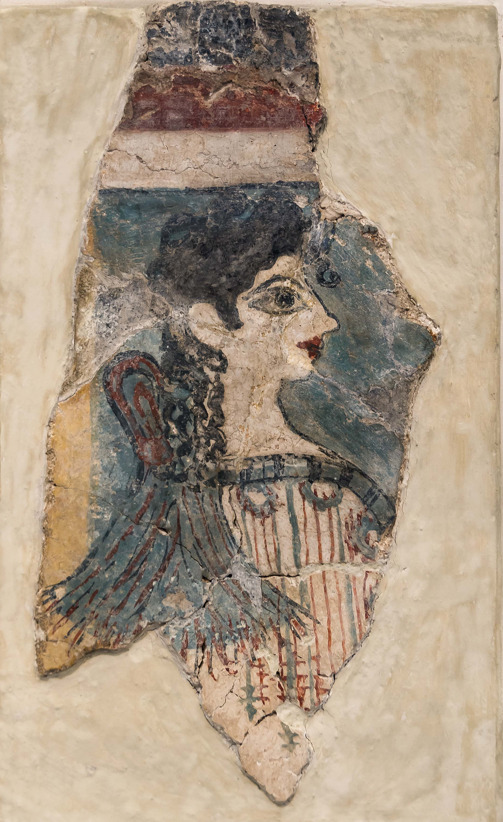
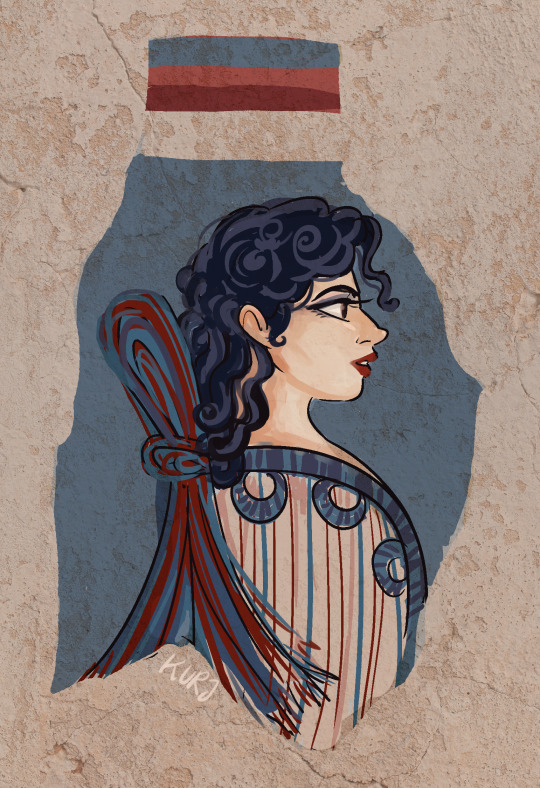
i often think about bringing the minoan fresco women back to life through drawing
La Parisienne / Minoan Lady / Camp Stool Fresco -> my drawing
#minoan#tagamemnon#bronze age aegean#minoan frescoes#la parisienne#the name of this fresco is la parisienne which i hate with passion so im not gonna call it like that#but tagging in case someone searches by this name ew#i saw this fresco in the heraklion museum twice and each time im stunned#frescoes!!!! heart eyes#art#kurjdraws
1K notes
·
View notes
Text

~ Necklace of assorted beads.
Culture: Early Aegean, Minoan
Period: Bronze Age, Middle Minoan Period
Date: 1800–1550 B.C.
Medium: Stone and gold
#ancient#ancient art#ancient jewelry#jewelry#necklace#necklace of assorted beads#minoan#early Aegean#bronze age#gold#1800 b.c.#1550 b.c.#history#archeology#museum
4K notes
·
View notes
Photo
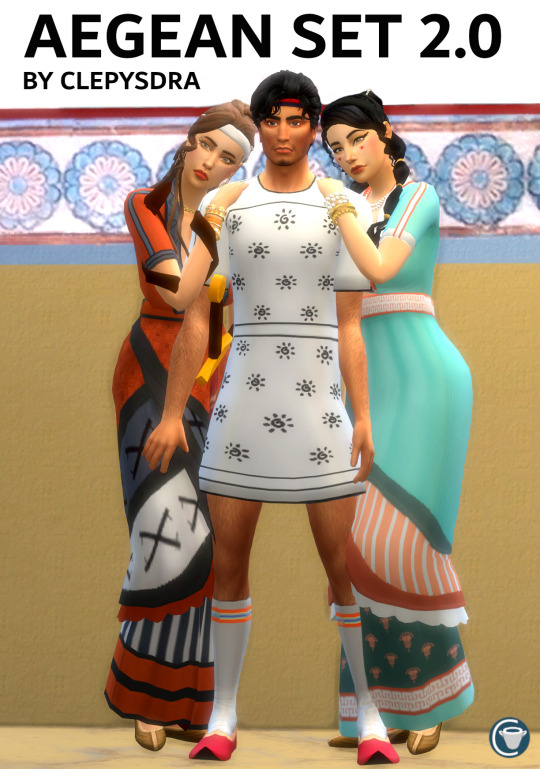

Aegean Set 2.0
Revisiting Ariadne and Phaedra to give them some clothes! And also a tunic for Theseus. The outfits are based off of ancient Minoan and Mycenaean clothing (with huge inspiration taken from the reconstructions by Dr. Bernice Jones; I don’t think I’d be able to visualize their shapes from the ancient frescos alone), although some swatches are more historically accurate than others.
~You can find the first half of the Aegean set here.~
Ariadne Dress (UPDATED 1/2/24)
Long dress category
15 swatches
Base game compatible
Feminine
Theseus Tunic
Short dress category
17 swatches
Base game compatible
Masculine
DRESS DOWNLOAD - Dropbox (no ads)
TUNIC DOWNLOAD - Dropbox (no ads)
~Also, the Manthos sword on Theseus’ hip is by the amazing @kyriat-sims~
#my cc#s4cc#ts4cc#minoan#mycenaean#mycenae#knossos#aegean#mediterranean#bronze age#ts4 history#ts4mm#ariadne#phaedra#theseus#mythology#history#ancient history#crete#cretan#greek#ancient greece#greece#mythos
387 notes
·
View notes
Text
The Bronze Age Uluburun shipwreck has revealed more than 18,000 spectacular artifacts. From precious jewels to the golden seal of Egyptian Queen Nefertiti, this find is an archaeological treasure of Mediterranean history.
55 notes
·
View notes
Text



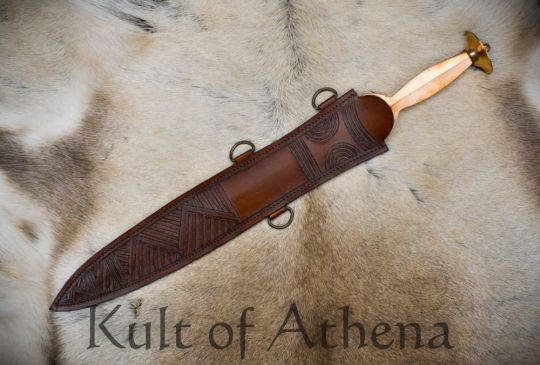
Deepeeka – Ancient Aegean Naue II Sword with Bronze Hilt
A truly ancient sword, the Naue II type swords were first created and used for ancient warfare almost 3,500 years ago around 1450 BC. Originally made entirely of bronze, these robust and long-bladed (for the time) swords which feature a hilt of organic material being riveted and pinned directly to the blade tang were in use for over 700 years and they bridged the gap between the bronze and iron ages with later designs having sword blades crafted from iron. These swords could be seen everywhere from northern Italy to the far ends of the Mediterranean and were most prominent around the Aegean.
This reproduction of an ancient Naue II sword has a blade of tempered, modern steel for durability and reliability. Its hilt is formed from bronze which is riveted directly to the thick blade tang for a very sturdy overall construction. Included with the sword is a tough leather sheath with hand-embossed and tooled design and antiqued hanging rings that allow for it to be worn vertically or at an angle with a baldric set up (sword belt not included).
#Kult of Athena#KultofAthena#New Item Wednesday#Deepeeka#Ancient Aegean Naue II Sword with Bronze Hilt#Ancient Aegean Naue II Sword#sword#swords#weapon#weapons#blade#blades#European Swords#European Weapons#Ancient Swords#Ancient Weapons#Bronze age#C60 High Carbon Steel#Battle Ready#Greek Swords#Greek Weapons
16 notes
·
View notes
Text
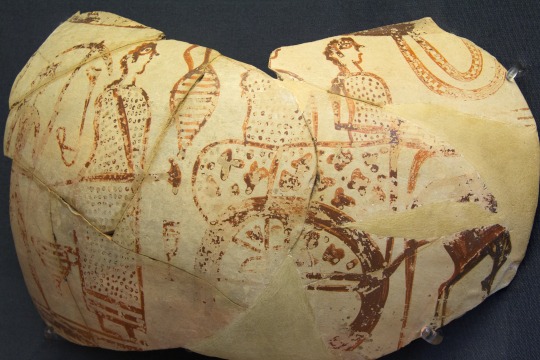
A chariot with charioteer and rider, followed by two walking figures. Fragment of a Mycenaean krater (mixing-bowl) by an unknown artist; ca. 1400-1350 BCE (Late Helladic IIIa1). Found in Tomb 67 at Enkomi, Cyprus; now in the British Museum. Photo credit: Zde/Wikimedia Commons.
#classics#tagamemnon#Ancient Greece#Bronze Age#Aegean Bronze Age#Mycenaean#Mycenaean Greece#Cyprus#Ancient Cyprus#art#art history#ancient art#Greek art#Ancient Greek art#Bronze Age art#Mycenaean art#Cypriot art#vase painting#krater#British Museum
183 notes
·
View notes
Text
A Pantheon without attributes? Goddesses and gods in Minoan and Mycenaean iconography, in J. Mylonopoulos (ed.), Divine Images and Human Imaginations in Ancient Greece and Rome
9 notes
·
View notes
Text
AHHH My MA paper has been officially approved and accepted for my program!!!
#AHHHH#TWENTY SPREADSHEETS FILLED WITH PIGMENT USAGE DATA LATER#blood sweat tears and alcohol#it’s 86 pages with the bibliography#63 or so with just text!#he’s a beast and a labor of love#from me to Bronze Age Aegean pigments#murex and Egyptian blue#the loves of my life#I will be getting a tattoo of you Eg blue#I am only more certain of it#I stayed up so late and worked so hard on it and cried so much over it and ranted to me friends an ungodly amount of hours#tarantulahawkmoth proofread so many of my emails over this thing#thank you for that friend#personal#I am so very tired#but so very happy#help a grad student out#help an undergrad out
1 note
·
View note
Text
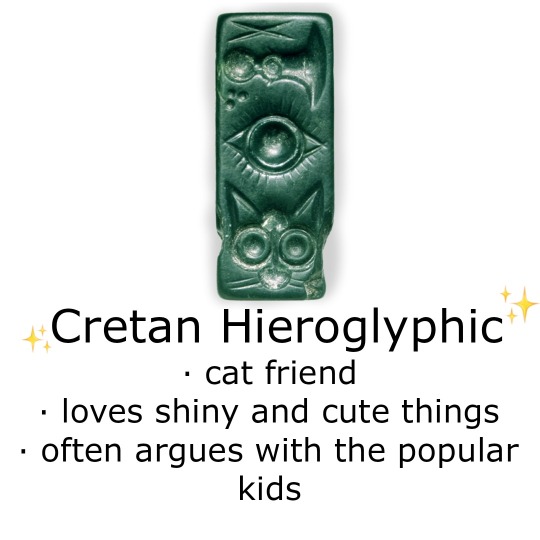
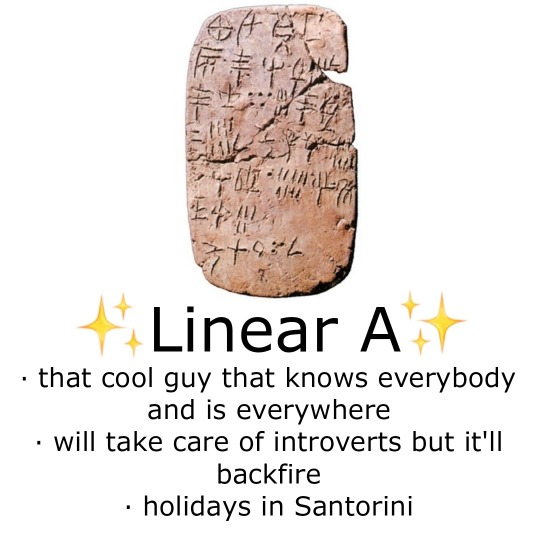


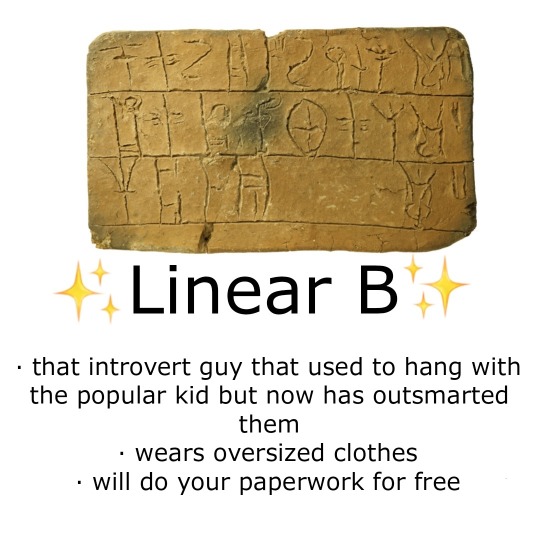

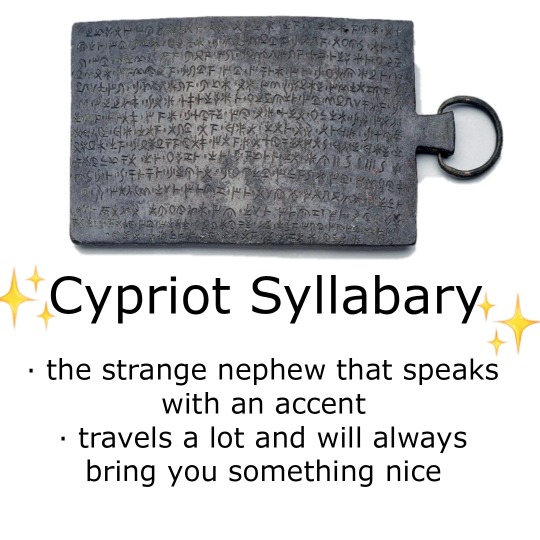
✨ tag yourself ✨ but with Aegean Scripts! Mainly Bronze Age, with a sprinkle of Iron Age (Cypriot Syllabary).
#tagamemnon#ancient greece#crete#minoan#scripture#history#classics#bronze age#cretan hieroglyphic#linear a#phaistos disc#linear b#cyprominoan#cypriot Syllabary#arkalochori axe#archaeology#tag yourself
3K notes
·
View notes
Text
Oera Linda: Ancient Wisdom or Modern Fraud? - Historic Mysteries
Oera Linda: Ancient Wisdom or Modern Fraud? – Historic Mysteries
Author’s Note: The Frisians are a Germanic ethnic group Indigenous to coastal regions of the Netherlands & northwestern Germany.
https://www.historicmysteries.com/oera-linda/

View On WordPress
#1805#1811#1830#1864#1867#1872#1874#1879#1880#1930s#1934#1970s#2194 BC#3rd millennium BC#9th century#Aegean Sea#Ancient Frisian#Atland#Atlantis#Bronze Age Collapse#Cornelius Over de Linden#Dark Ages#Denmark#Dutch#Eelco Verwijs#Egypt#Europe#Friesland#Frisia#Frya
1 note
·
View note
Text
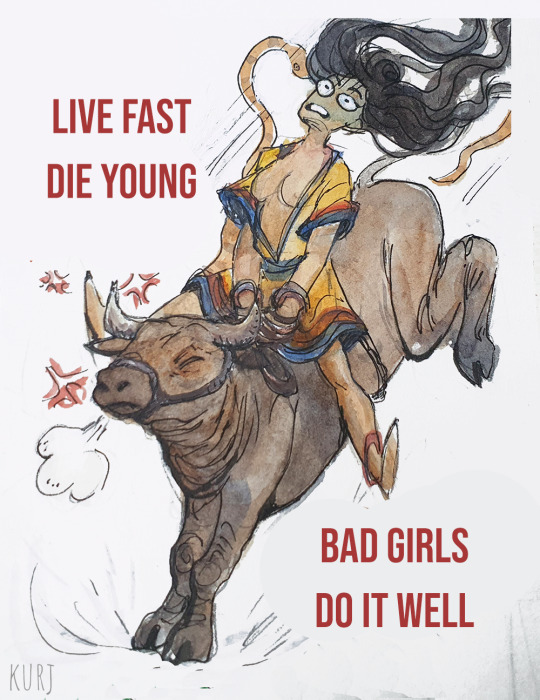
don't ask
#minoan#tagamemnon#ancient greece#bronze age aegean#watercolor#kurjdraws#had to get this out of my head oh god#quick scribble and back to job searching#my minoan art
427 notes
·
View notes
Text
Minoan Kilt
The large, structural skirt worn by Minoan women in art is instantly recognizable, and when I made my own I combined current best guesses with my own personal tastes.

My kilt shape follows the hypothesis laid out by Bernice Jones in her book Ariadne's Threads: The Construction and Significance of Clothes in the Aegean Bronze Age. She describes the shape of that of a labrys, a double-headed axe with apparent ceremonial significance in Ancient Minoan culture. This garment may be depicted in Linear-B logogram *166 + we, we-being the backwards-s-shaped squiggle in the center which identifies the piece as a garment.

See pages 336 and 341 in Marie-Louise B. Nosch, The Textile Logograms in the Linear B Tablets
Actual details on construction and materials below the cut:
Construction:
The top and bottom edges of the kilt are concave, so the sides are longer than the middle. This gives the chevron-shape seen on layered kilts in art. In addition, the curved top half makes the skirt flare out, accommodating the hips and giving more freedom of movement to the legs. My kilt measured from my waist to my anklebone at the longest point, and about 1.5 times around my waist.
I chose to make a flounced kilt, with smaller strips of fabric and trim applied to a large base piece, rather than a tiered kilt, in which multiple kilt shapes of varying length are layered one on top of the other, so you end up wrangling 3 layers of fabric around the waist. The flounced kilt saves fabric and gives you a lot more freedom with whatever trim you might want. Jones' diagram for a flounced kilt is seen below:

Unlike the version in the diagram above, I chose not to attach ties to the garment itself both because the linen I used was very heavy and I was concerned about weight, and also because folding the skirt and securing it with a separate tie worked just fine for my tastes. In total I had four flounces: 2 alternating rows each of fabric and fringe.
The vertical edges of most kilts are left plain, probably representing either the selvage or an edge otherwise finished off to prevent fraying. For my kilt, however, I ended up with a couple inches of self-fringe on either side as I adjusted the fabric to the correct width. At least three examples of kilts with fringed vertical edges are known, all three from the so-called "House of the Ladies" in Akrotiri
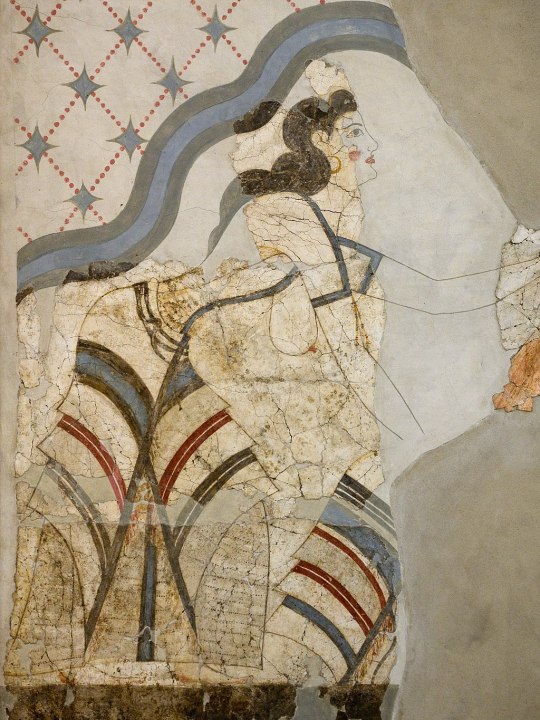

Photos from Wikimedia Commons. Image 1. Image 2.
The vertical edges of these kilts are reinforced with a colored band or tape, probably to keep the garment from unintentional further fraying. Accordingly, I did the same on my kilt. I also like that it gave a nice vertical diagonal to counterbalance the horizontal ones.
Materials
I tried to use mainly linen and wool, the fibers most available on Ancient Crete, but some of my trim was cotton because sometimes you just have to use what's cheap and available in the today times.
The base of my kilt is a heavy, patterned linen in what's called a diaper weave, meaning that a repeating diamond pattern is woven into the pattern itself. A lot of the Minoan textiles depicted in frescoes are characterized by repeating geometric patterns, likely woven into the fabric itself, and that was something I wanted to capture in my own piece. My linen is woven with both cream and natural colored threads. The heavy weight is important to give structure to the garment--otherwise it would be kind of limp. My linen was from Burnley & Trowbridge (shameless plug), as was the plain cotton twill tape I used to bind the top and bottom edges of the kilt, and the dark red wool twill tape I used along the vertical edges.
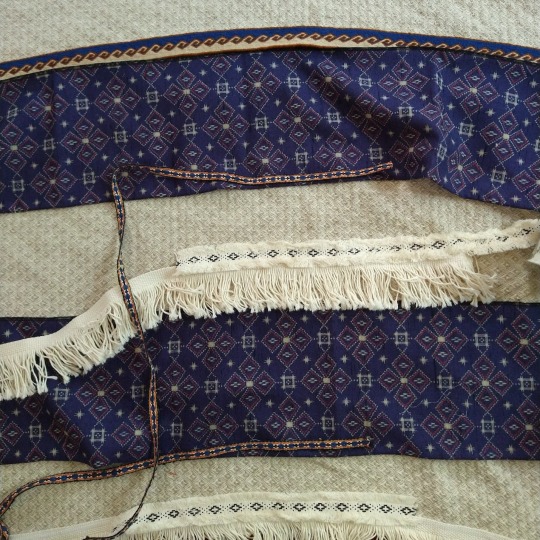
I bought my cotton fringe from a rug supply store. I had to search a while to find a fringe that would work for me, and I ultimately chose fringes with a woven header rather than the more common knotted one, so that it would lay flat against the kilt. I hid the woven header under a layer of cotton fringed trim from Michaels (yes, Michaels) with this really great diamond and dots pattern woven in black.
The blue layers are from a bolt of vintage wool Kimono fabric. Blue appears frequently in frescoes, likely achieved with indigo or woad dye, or even murex/mollusk dye. The fabric is printed with an imitation ikat pattern of diamonds and squares that made me think "the vibes seem right!" because quite frankly, you aren't going to get "historically accurate" Minoan textiles (which there probably isn't enough archaeological evidence to definitively describe) without, like, hand-weaving it yourself or paying someone hundreds of dollars to do it for you (and that price is if the weaver really likes you). Neither of which appealed to my desire to just make a fun, low stress project. Good enough is good enough.
The narrow trim on the bottom of the blue flounces is vintage cotton/poly woven trim. This trim, while narrow, was quite thick and stiff, which was great because it added more weight and structure to the end of my flounces since the wool fabric itself was quite thin.
The top layer is a custom tablet-woven wool trim that I commissioned from MAHTAVAhandicraft on Etsy. I imagined this as the "centerpiece" of my kilt, and I'd arrange everything to complement it.

It's a kivrim pattern, which has itself only been traced to 19th-century Anatolia, but I didn't care. The way it looks like waves reminded me of how central the sea was to life in the Ancient Aegean and Mediterranean and it captured the idea and aesthetic I was pursuing. I mean, doesn't it remind you of these dolphins?

(I like the dolphins)
The whole thing was machine sewn with the exception of hemming and adding trim to the blue flounces. If you were to look at it from the back, you'd see lots of zigzag stitches, because i wanted to be fast! and have fun! not chase some unreachable ideal of "accurate."
As for wearing it, I chose to wear it with the top part folded/rolled down over a belt, so I have a thick tube of fabric around my waist. Many images, like the frescoes above of women with fringed kilts, appear to just show the kilt being tied closed. Other images are so fragmented or stylized that it's unclear what kind of skirt closure was used. Sculptures and figurines definitely show some kind of SOMETHING around the waist, whether this is folded fabric or a kind of belt is unclear. Different art could show different things!
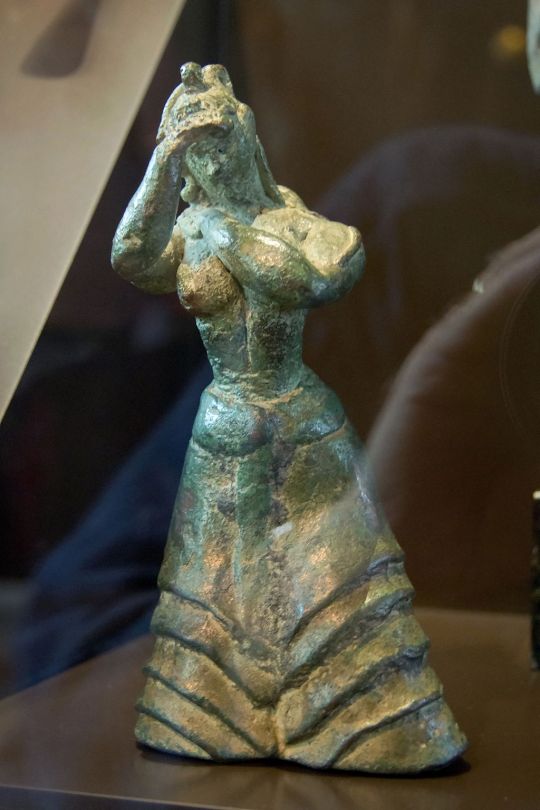
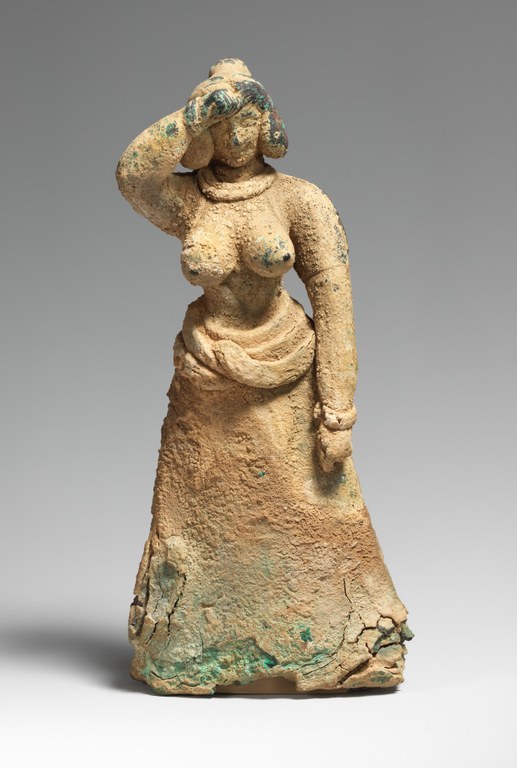
I think I see evidence of a continuous line from the skirt to the waist-roll on the figure on the left, found in Troas, which I think indicates some kind of skirt-folding situation. The woman on the right, found in Crete, looks more like she's wearing some kind of long coiled belt, or perhaps snakes. Who knows? I don't! For my own part, I found the combination of rolled waist + tie belt the most secure for doing things like kneeling, stomping around, and wading into rivers to rescue bees. I also liked that it gave me the bulk around the hips that gives Minoan figurines such a powerful silhouette, and proportionally gives more of an hourglass shape. If you wanted to do something more firmly grounded in the sources, stick just with the waist tie or belt, wrapped around a couple times and tied in back. If you want to be like me, just say "well we don't KNOW it didn't happen" and just do whatever you want. Have fun! Whatever happens, it should be fairly easy to move around in the kilt--this is not a restrictive garment, just a heavy one.
805 notes
·
View notes